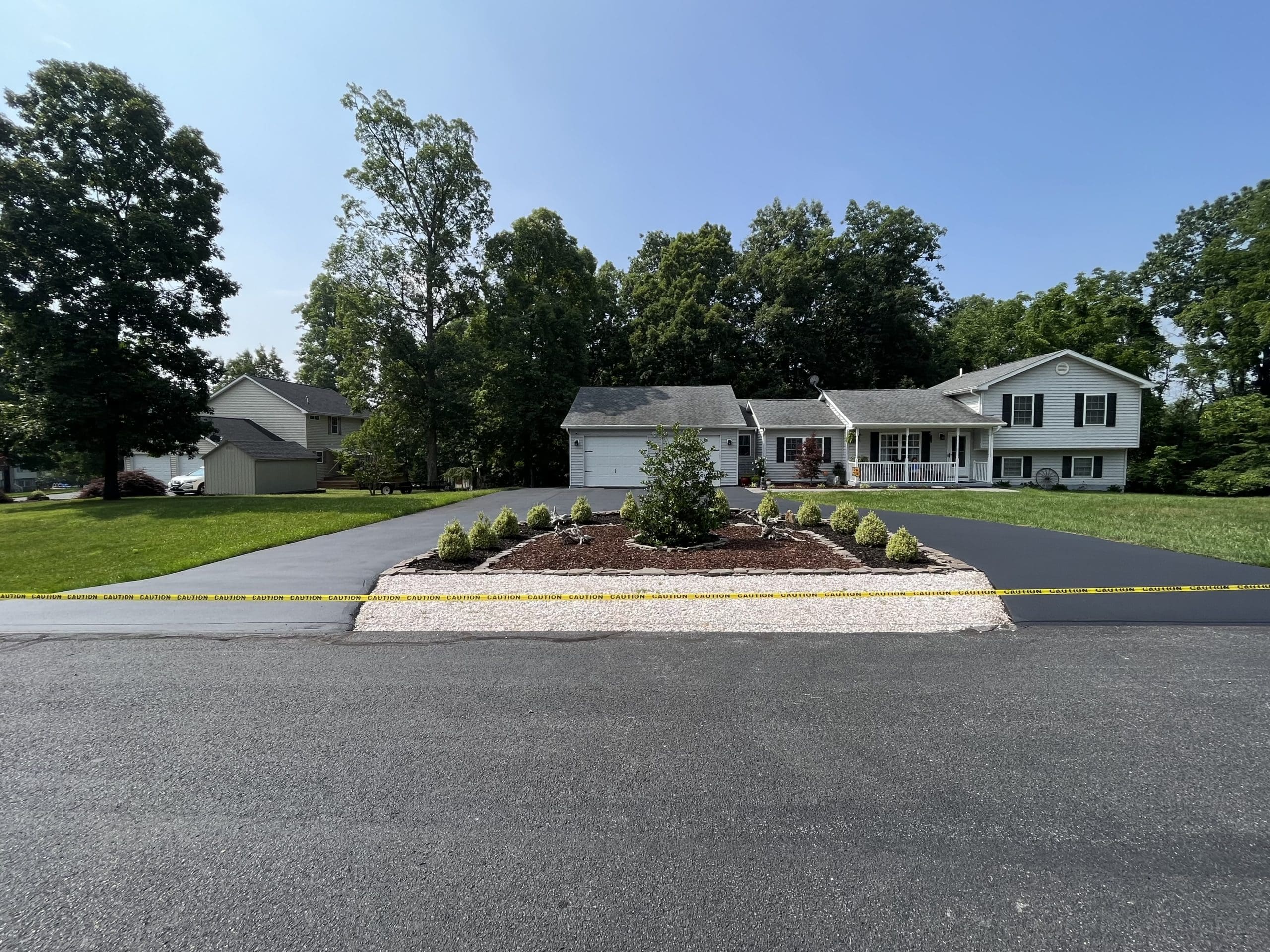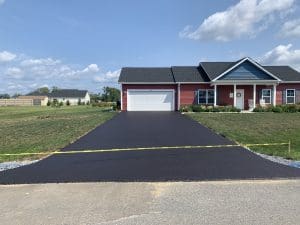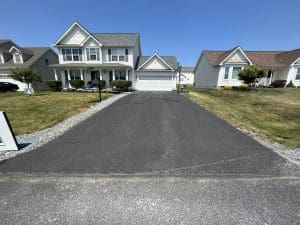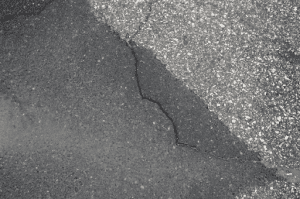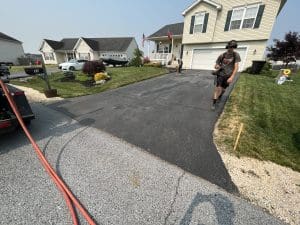Unveiling the Sealcoating Process: A Step-by-Step Guide
Maintaining asphalt surfaces, whether driveways, parking lots, or roadways, is essential for their longevity and durability. Sealcoating, a protective process, stands as the frontline defense against natural elements, chemicals, and everyday wear and tear. In this comprehensive guide, we’ll unveiling the entire sealcoating process, from understanding its fundamentals to post-sealcoating measures.
Unveiling Sealcoating Essentials
Sealcoating emerges as a preventive maintenance powerhouse, significantly extending the lifespan of your asphalt surfaces. Acting as a resilient barrier, it safeguards against water, UV rays, oil, gasoline, and more—common culprits in asphalt deterioration.
Moreover, sealcoating enhances the aesthetic appeal of your asphalt. The result is a fresh, well-maintained appearance that elevates the curb appeal of your property.
The Significance of Sealcoating
Sealcoating boasts myriad benefits, with its primary advantage being its ability to shield asphalt from moisture damage. Water, a leading cause of pavement deterioration, infiltrates surfaces and weakens structural integrity. A sealcoat creates a waterproof barrier, preventing water from causing cracks, potholes, and other harm.
Additionally, sealcoating combats the perils of UV rays. Over time, sunlight can lead to fading and brittleness. A sealcoat provides UV protection, preserving flexibility and reducing the risk of cracks and other damage.
Furthermore, it acts as a formidable defense against chemicals and oils that may spill on the surface, preventing softening or discoloration.
Deconstructing the Sealcoat
Before embarking on the sealcoating journey, it’s vital to understand the components comprising a sealcoat. A typical sealcoat comprises three key ingredients:
- Asphalt Emulsion: At its core, a sealcoat relies on asphalt emulsion—a blend of asphalt cement, water, and an emulsifying agent. This mixture provides adhesion and creates a protective layer on the asphalt surface.
- Fillers: Fillers, like silica sand and mineral aggregates, bolster durability, improve traction, and fill minor cracks or pits in the asphalt.
- Additives: The addition of additives, such as latex polymers or rubber compounds, enhances flexibility, adhesion, and resistance to chemicals and UV rays.
Pre-Sealcoating Preparations
Before the sealcoat application, thorough preparations are essential to ensure optimal results and longevity. These include cleaning and inspecting the asphalt surface and repairing any existing cracks or potholes.
Cleaning and Inspection
Initiate preparations by meticulously cleaning the surface. Eliminate debris, loose materials, and vegetation that might hinder sealcoat adhesion using a power broom or blower. This step banishes dust, dirt, and loose particles.
Subsequently, embark on a comprehensive inspection of the asphalt. Identify cracks, potholes, or other damage that requires attention before sealcoating. Addressing these issues in advance ensures a smoother and more effective process.
Repairing Cracks and Potholes
For smaller cracks, employ crack filler to seal gaps and prevent them from widening. Potholes, however, demand more extensive repairs. Clean them, fill with asphalt patching material, and compact to create a level and stable surface.
Selecting the Right Sealcoat
Choosing the appropriate sealcoat is pivotal for optimal results and durability. Different sealcoats cater to specific weather conditions and offer various benefits.
Types of Sealcoats
Two primary sealcoat types exist: coal tar-based and asphalt emulsion-based. While coal tar-based sealcoats have historically been popular due to their durability, they may have environmental concerns and legality issues in some regions.
Asphalt emulsion-based sealcoats, on the other hand, are environmentally friendly. Composed of asphalt cement and water, they excel in protecting against water damage and UV rays. They are widely available and suitable for most residential and commercial applications.
Weather-Based Selection
Consider your climate and weather conditions when choosing a sealcoat. In colder regions prone to freezing and thawing cycles, opt for a sealcoat with a higher concentration of latex additives. These additives enhance flexibility, allowing the sealcoat to expand and contract without cracking or peeling.
Warmer areas, where high temperatures soften asphalt, benefit from sealcoats with reflective properties that reduce heat absorption and UV damage.
The Sealcoating Process
With preparations complete, it’s time to embark on the sealcoating journey. This involves mixing the sealcoat and expertly applying it to the asphalt surface.
Mixing the Sealcoat
Accurate mixing of the sealcoat is crucial. Follow manufacturer instructions for proportions and a consistent mixture. Sealcoat can be mixed manually, mechanically, or with specialized sealcoating equipment. Ensure cleanliness and a controlled environment to maintain the sealcoat’s quality.
Applying the Sealcoat
Sealcoat application methods typically involve squeegee, spray, or a combination of both. Squeegee application offers precise control, making it ideal for smaller areas or intricate spaces. Pour the sealcoat and evenly spread it with a rubber squeegee.
For larger surfaces like parking lots or roadways, spray application using sealcoating machines with spraying nozzles provides fast and even coverage. Mastery of technique and equipment is essential for an even application.
Post-Sealcoating Measures
After sealcoat application, specific measures are necessary to ensure proper curing and long-term performance.
Drying and Curing Time
Allow 24-48 hours for sufficient drying and curing, contingent on weather, humidity, and sealer type. Protect the fresh sealcoat from traffic, water, and debris during this period.
Maintenance for Longevity
Regular maintenance is key to prolonging sealcoat life and preserving asphalt integrity. Keep the surface clean, avoid harsh chemicals, inspect for damage, and promptly address issues. Periodic resealing every few years maintains sealcoat effectiveness.
In Conclusion
Sealcoating, a cornerstone of asphalt maintenance, safeguards and extends the life of your asphalt surfaces. By understanding sealcoating fundamentals, adhering to pre-sealcoating preparations, selecting the right sealcoat, following the sealcoating process, and implementing post-sealcoating measures, you protect and prolong your asphalt’s life. With consistent care, your sealcoated asphalt remains a well-preserved, aesthetically pleasing surface for years to come—partner with Top Gun Sealcoating to ensure your asphalt’s best performance.
